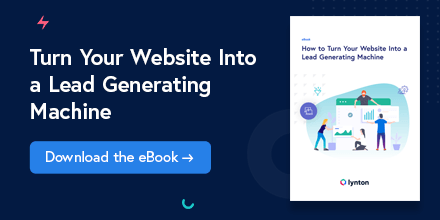New to HubSpot? A seasoned user? Whatever the case, with so many different systems and features available in the HubSpot ecosystem, you may get tripped up on a phrase occasionally.
We’re here to help!
Our team has compiled a list of common HubSpot terms along with their definitions that you can turn to whenever you need. Here’s what we’ve collected:
HubSpot Terms You Need to Know
Activity – An activity is anything a contact has done to interact with your company (i.e., email opens, email clicks, meetings, forms submissions, etc.).
App marketplace – A hub where you can download hundreds of integrations and other applications that maximize your HubSpot stack.
Asset marketplace – An area within HubSpot that gives access to thousands of themes, paid and free, so you can easily customize the look of your site, email, landing pages, and more.
Buyer’s journey – The process a buyer or customer goes through to become aware, consider, and decide whether or not to purchase a product or service. As suggested, it’s broken down into the awareness, consideration, and decision stages.
Calling – A feature within the HubSpot CRM that enables you to connect over the phone with your contacts.
Call-to-action (CTA) – A button or link that drives prospective customers to a web or landing page where they can convert on a form.
Campaign – A tool within HubSpot that lets you tag related marketing assets and content so you can track and measure the effectiveness of all your collective efforts.
Content management system (CMS) – A CMS is any system that lets you create and manage content on a website.
Contact – One of the four standard objects in HubSpot’s CRM, a contact is the information on a person your company engages with.
Contact record – All of the information you can store and maintain on contact, from personal demographics to activity.
Company – One of HubSpot’s four standard objects, a company is simply the data of different businesses you work with; generally, associated with a contact.
Customer relationship management software (CRM) – A CRM is a system that houses all the necessary data to manage relationships with your customers.
Customer effort score (CES) – A survey that gauges how much effort a customer needed to use to find an answer or solution to something; generally used to measure customer loyalty.
Customer satisfaction survey (CSAT) – A survey deployed by your support or service team that measures your customer’s satisfaction with your products, services, and experiences.
Drag and drop editor – The HubSpot email and page tool that lets you edit your emails and webpages by dragging and dropping different modules and content pieces.
Deal – Another of HubSpot’s four standard objects, a deal represents an ongoing transaction a member of your sales team is pursuing with a contact or company.
Enrollment trigger – An enrollment trigger is something a user must do in order to be put into one of your company’s workflows (ex: if someone is a member of your newsletter list, they’ll receive your email).
Fallback email – An email that allows you to use certain HubSpot tools, such as ticket automation, even if you haven’t connected a shared inbox yet.
Flywheel – The flywheel model refers to the idea of putting your customers front and center and creating momentum by aligning your entire organization around delivering a positive customer experience.
Forecast – A forecast is a tool used by sales executives to predict what a member, team, or company will sell weekly, monthly, quarterly, or annually.
Funnel – A funnel represents your customers’ journey from their first interaction to becoming a brand advocate; this helps track how effective your team is at moving people through your lead funnel.
- Top-of-the-funnel (TOFU) – This can refer to someone who’s in the awareness stage of your buying journey and can also refer to the type of content you create for that stage.
- Middle-of-the-funnel (MOFU) – This is similar as above, but instead of awareness, this person is evaluating and considering and would need appropriate content.
- Bottom-of-the-funnel (BOFU) – Again, similar to above, but refers to decision-level content or contacts.
General Data Protection Regulation (GDPR) – GDPR 2016/679 is a regulation in EU law on data protection and privacy in the European Union and the European Economic Area.
HubDb – HubSpot’s relational database that allows developers to create database-driven content that can be embedded within websites and landing pages.
Integration – The connection of data between two systems, platforms, or applications, i.e., a CRM and HubSpot marketing automation.
Landing page and thank you page – A landing page is any page where you can offer a resource in exchange for contact information and a thank you page is a follow-up that generally provides the resource.
Lead scoring – The process of assigning positive and negative values to activities a contact has with your website or company that are then used to move people from lead to MQL and SQL.
Lifecycle stage – Lifecycle is another marketing term to describe a contact’s journey from first engagement through purchase; HubSpot’s include subscriber, lead, marketing qualified lead, sale qualified lead, opportunity.
- Subscriber – Contacts who have opted in to hear more from your team via a newsletter, blog, or similar.
- Lead – Any contact that’s shown some “sales” readiness, like signing up for a premium content piece.
- Marketing Qualified Lead (MQL) – Any lead that has actively engaged with the team’s marketing efforts and should be flagged or handed off to sales.
- Sales Qualified Lead (SQL) – Someone who has indicated that they are ready for a direct sale follow up like submitting a form on a pricing page.
- Opportunity – Any contact associated with a deal that is not yet won.
List – The lists tool in HubSpot allows you to create a list of contacts or companies based on property values and other characteristics, including activities.
- Active – Lists that update members automatically based on preset criteria.
- Static – Fixed lists with records that meet a certain criterion when the list is saved.
Marketing automation system – A platform like HubSpot that automates certain marketing tasks like emails, social media, ads, and more.
Meeting link – A link that anyone in your HubSpot portal can copy and share with contacts so they can book time with you.
Object – A piece of data in your CRM, like a contact; also referred to as a record as in “contact record.”
- Custom objects – A way to define something outside of the four standard objects.
Partitioning – A way of allowing access to assets so only the right teams and users can view and edit them.
- Teams – A group of determined HubSpot users.
- User roles – Different permissions to give to different users in your portal, like admins, marketers, blog authors.
Personalization – Tokens that can be used to add personal demographic information, like first name, to an email or other piece of content.
Pipeline – A pipeline is where deal stages or ticket statuses are set; they’re used to predict revenue, analyze blockers, and manage tickets.
Properties – Properties allow you to store all the different types of information you collect about your records or objects in HubSpot; for example, descriptions and labels to help you identify more about a company.
Reporting – A method of providing insights into how your sales, marketing, and service efforts are doing, based on what matters to your organization.
- Dashboard – A centralized location that shows either your sales, marketing, or service metrics in one place.
- Single object – A report that lets you analyze an object, such as contacts, with object properties.
- Custom object – A report that lets you analyze a custom object with properties.
- Funnel – A report that measures the conversion rates between certain stages in a customer’s lifecycle or deal’s pipeline.
- Contract attribution – Reports that measure which assets, interaction, or source impacted lead generation.
- Deal create attribution – The same as above but shows what impacts deal generation.
- Revenue attribution – Same as above but shows what had the greatest impact on revenue; multi-touch revenue reports show the exact interactions in specific order that led to customers.
- Closed-loop – A report that shows each customer’s interaction on your website from the first time they visited through becoming a customer (includes sales, marketing, and service engagements).
Saved view – Saved views are a way to view a segment of your standard objects based on property values.
Sequence – A tool within Sales Hub that automates messages to your prospects in a defined order.
Session – A session groups together the interactions individuals have with your site, including page views, form submissions, and more.
Smart content – Content that changes on your website, email, or CTA based on defined user criteria, such as language.
Snippet – Snippets are short, reusable text blocks that can be used on any of the standard object records, in email templates, chat conversations, or when logging notes and activities.
Targeting rules – A way of tailoring the pop-ups or chat flows your visitors see when they visit your site.
Task – Something you can mark that needs to be done in HubSpot.
Theme – A theme is any set of templates, modules, global content, and style settings you can use to create your website.
- Template – Pre-made reusable page or email wrappers that users can select before populating content.
- Code templates – A set of templates for your website that are custom coded by a developer.
- Modules – a set of unique theme modules or reusable components added to pages that you can add and customize to any page template within a theme.
- Global content – Any content repeated on multiple pages, like a header.
- Theme settings – The default settings for the templates in your theme, like fonts, colors, and spacing.
Ticket – One of HubSpot’s four standard objects, a ticket is a customer inquiry or request for help from your customers.
Workflow – Workflow refers to an automated process where tasks, information, and emails are triggered based on set rules; users can either be added automatically through triggers or manually by importation.
Get Help
Are you a HubSpot master yet? If not, don’t worry. Even after 12 years as a HubSpot partner, we find ourselves looking up a term occasionally. Hopefully, this glossary will help you. If there is any specific term you’d like to know more about, don’t hesitate to reach out!
![]()




